Last updated - July 8, 2021
If you have ever been in a website development process, or has a website up and running, you probably have heard about WordPress. It is also the most favored platform because of its flexibility and easy usage. It has seen incredible usage growth in website development. Over the years, it has grown from helping to develop blogs & websites to content management system(CMS), eCommerce websites, membership sites to name a few.
WordPress comes in two variations; WordPress.org and WordPress.com. While the former is a free, open-source downloadable software that works in a self-hosted environment, while being installed and administered on your computer, the latter is a blogging hosting platform that works as a wizard and does not need installation on your computer.
In this article, I’ll explain how to install WordPress software on your computer. To use WordPress, we need a web host server. Basically, there are two ways you can install WordPress; On your third-party web host server or using localhost on your computer.
Quick access:
Let’s understand each process.
Installing WordPress on Web host server
There are two methods for installing WordPress on your hosting server:
- Using FTP Client software.
- Using cPanel of the respective hosting server.
1. Using FTP Client software
You can use FTP Client software like FileZilla or CyberDuck for uploading your WordPress folder on your website.
Let’s say you are using FileZilla software. Here’s what you need to do:
- Download FileZilla.
- Configure the setup to connect your hosting server.
- Download WordPress software from the official website.
- Unzip the downloaded WordPress file and upload the folder to your site.
- Create a database on your MySQL database.
- Enter your website’s URL in the URL bar of the browser and follow the installation procedure (the WordPress installation is discussed later in this article).
Tip: The FileZilla configuration process is out of the scope of this article. You can refer this article for step-by-step tutorial of the server setup and the website folder uploading process.
2. Using cPanel of the respective hosting server
Many popular hosting service providers have created a cPanel(or wizard) to install WordPress and other website building tools. You can check your hosting server dashboard or contact them for the installation process.
Following are links for installing WordPress on some of the popular hosting services:
- Installing WordPress on BlueHost
- Installing WordPress on Hostgator
- Installing WordPress on Kinsta
- Installing WordPress on Siteground
- Installing WordPress on A2Hosting
How to install WordPress on Localhost?
Using localhost is a great way to learn, develop or test your website before going live. For this, you need to install local server software like XAMPP, WAMP or MAMP. These tools are available for free and there is no overhead of finding unique domain names or paying any price. They are hassle-free, and most importantly, work exactly the same way as a web host.
Here I’ll explain the step-by-step process of installing WordPress locally for both Windows and Mac computer.
How to install WordPress on XAMPP for Windows?
Following are the steps to install XAMPP and WordPress on Windows:
1. Downloading and installing XAMPP
- Download XAMPP from its official website. Click on the Windows version as shown in the screenshot below.
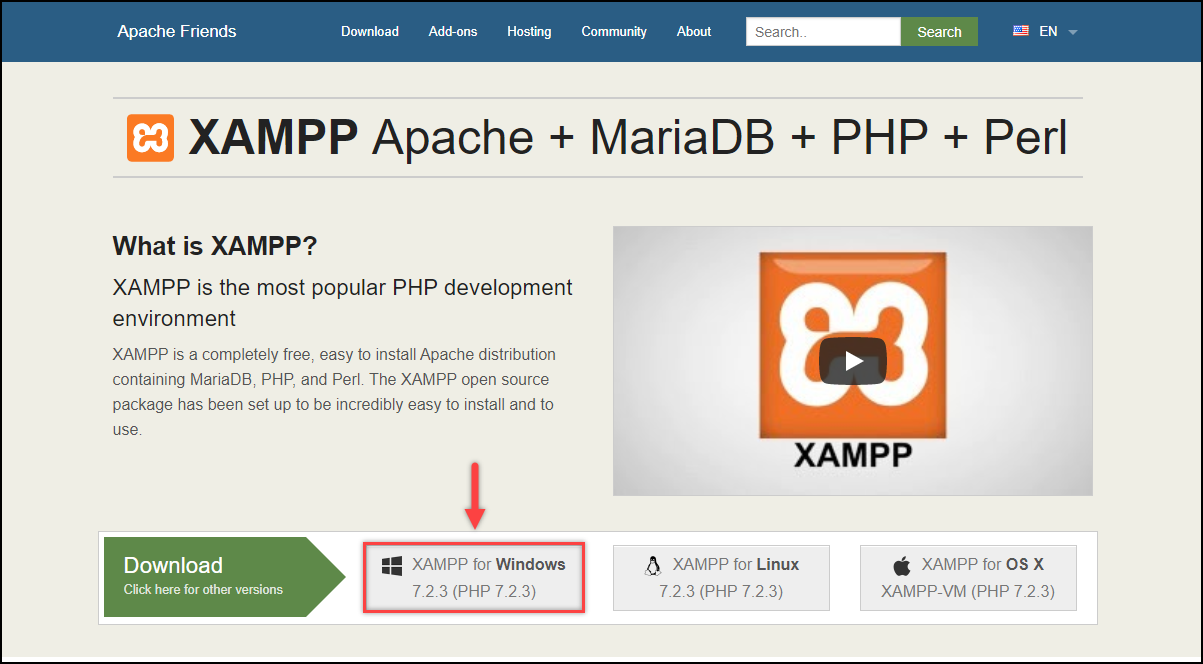

- Once the file is downloaded, click on it to begin the installation. The installation process is pretty straight-forward, with choosing components, directory location and so on. If you are a beginner, you do not need to worry about each and every setting. You can keep the settings in the same way and proceed further by clicking on Next button.
A sample screenshot of the installation setup is shown below.
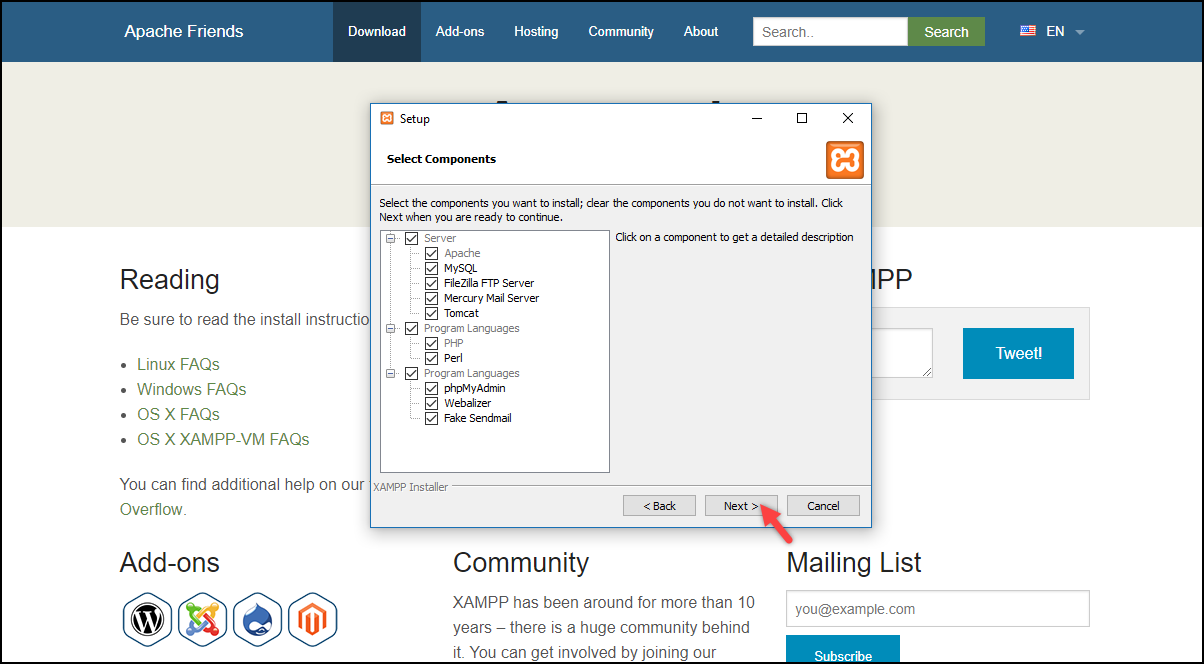

Starting Apache and MySQL services: After the installation is completed, launch the XAMPP Control Panel. The control panel consists of various services and settings, but for our demonstration, we need to enable Apache(for hosting server) and MySQL(for the database).
Click on Start button of both the services as shown in the below screenshot.
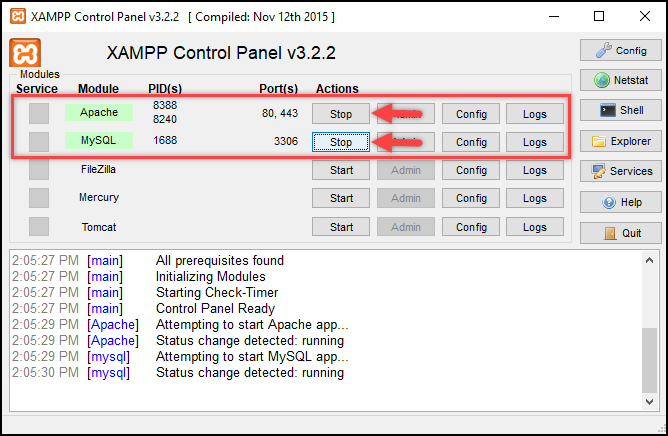

2. Creating a database
- Click on Admin option of MySQL service to open the phpMyAdmin interface, as shown in the screenshot below.
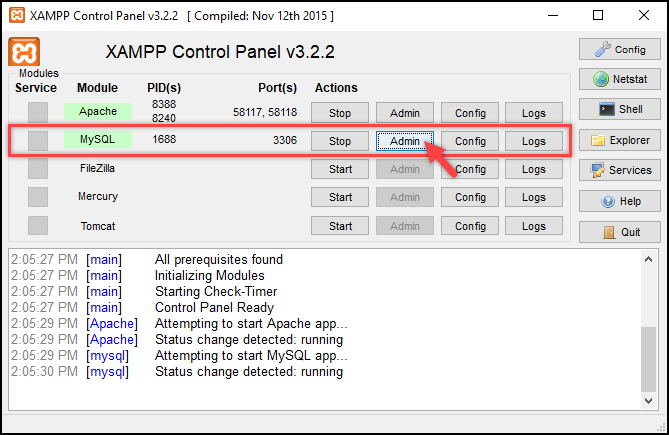

- The phpMyAdmin interface is used to create and maintain the database for all your websites. To create a new database, click on Database tab, enter a database name(say db_wordpress) and click Create as shown in the below screenshot.
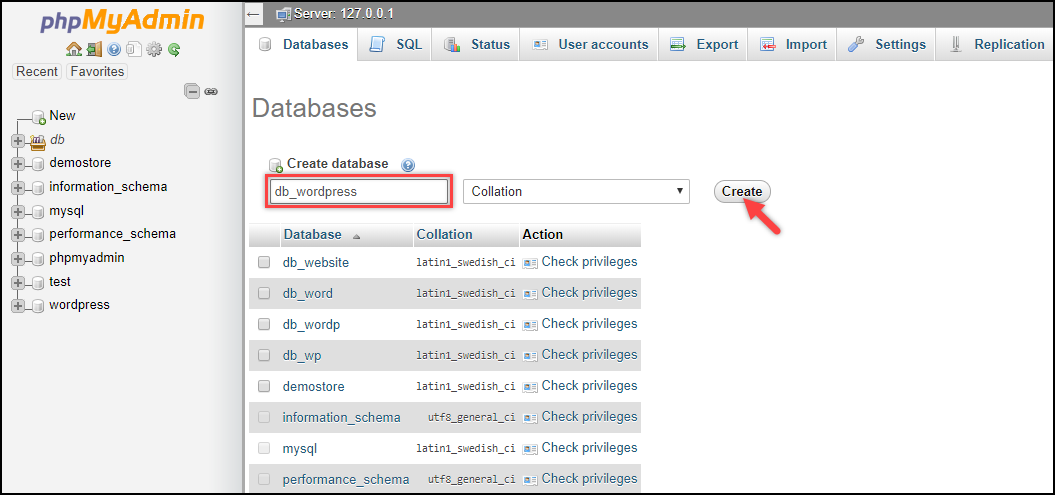

3. Downloading WordPress
- Download WordPress from its official website. Once the file is downloaded, unzip it and upload it to the htdocs folder under your XAMPP installation. This process is equivalent to uploading your website to your web host.
For example, if you have installed XAMPP in C:/ drive, upload the WordPress folder in C:/xampp/htdocs as shown in the screenshot below.
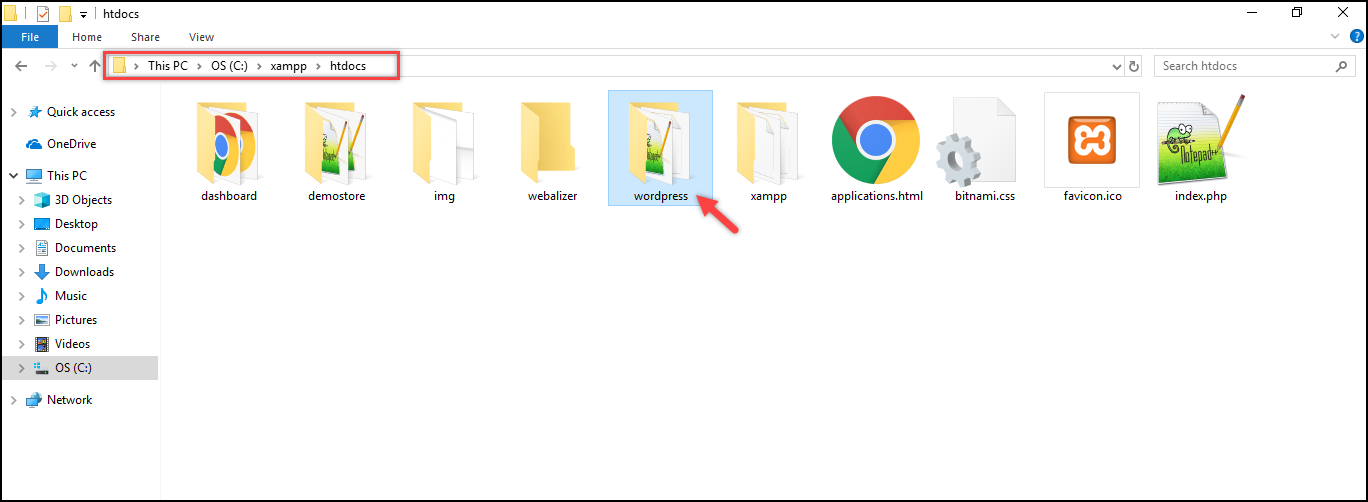

- Additionally, you can choose to rename the folder to your desired website name. But for our demonstration, I have chosen to keep wordpress.
4. Connecting WordPress and XAMPP
- Open your web browser and enter localhost/wordpress(considering your website folder name is wordpress) in the URL to run WordPress.
- In the very first page, you are prompted to select the desired language, as shown in the below screenshot.
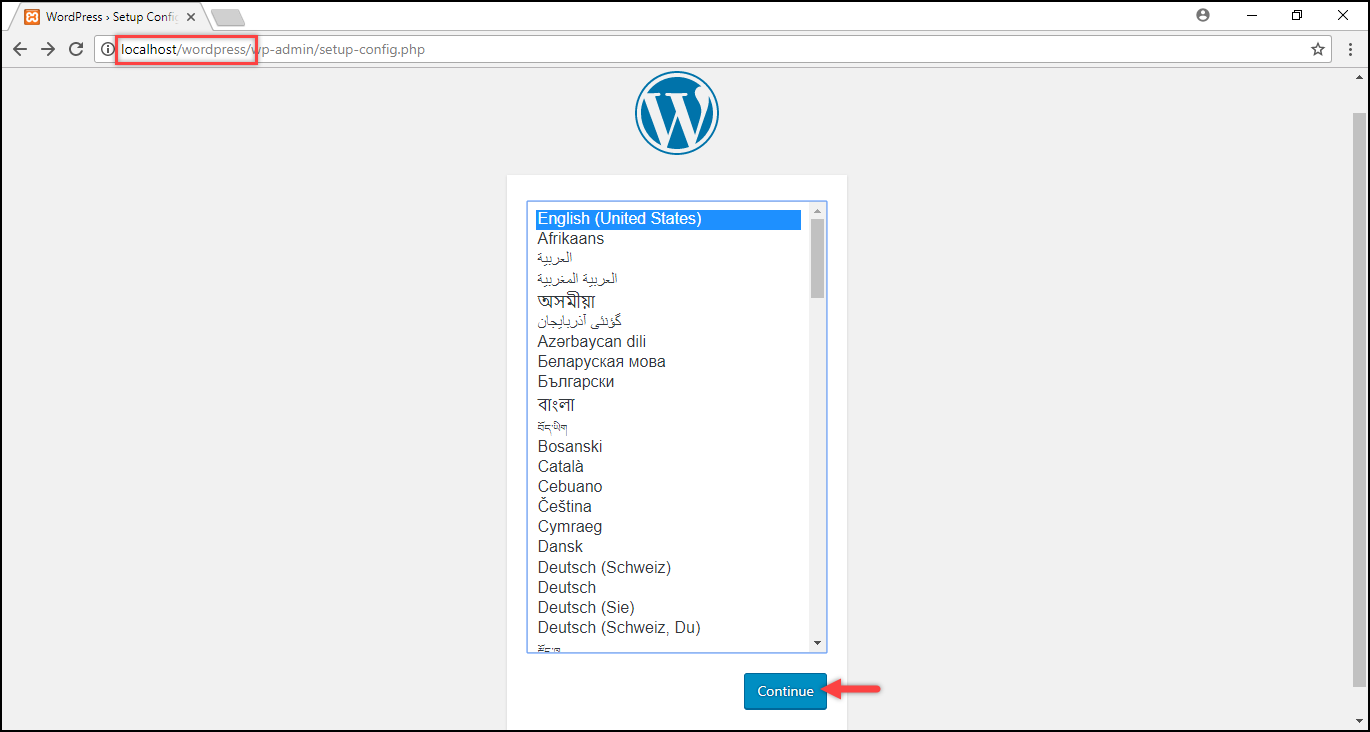

Select your desired language and click Continue.
- Next, you are taken to a page to enter information like database name, database username and its password, database host and database table prefix(every table created in the given database will start from the specified prefix) for creating the wp-config.php file. This file is used for connecting your WordPress site and XAMPP.
Following is a sample screenshot of the screen.
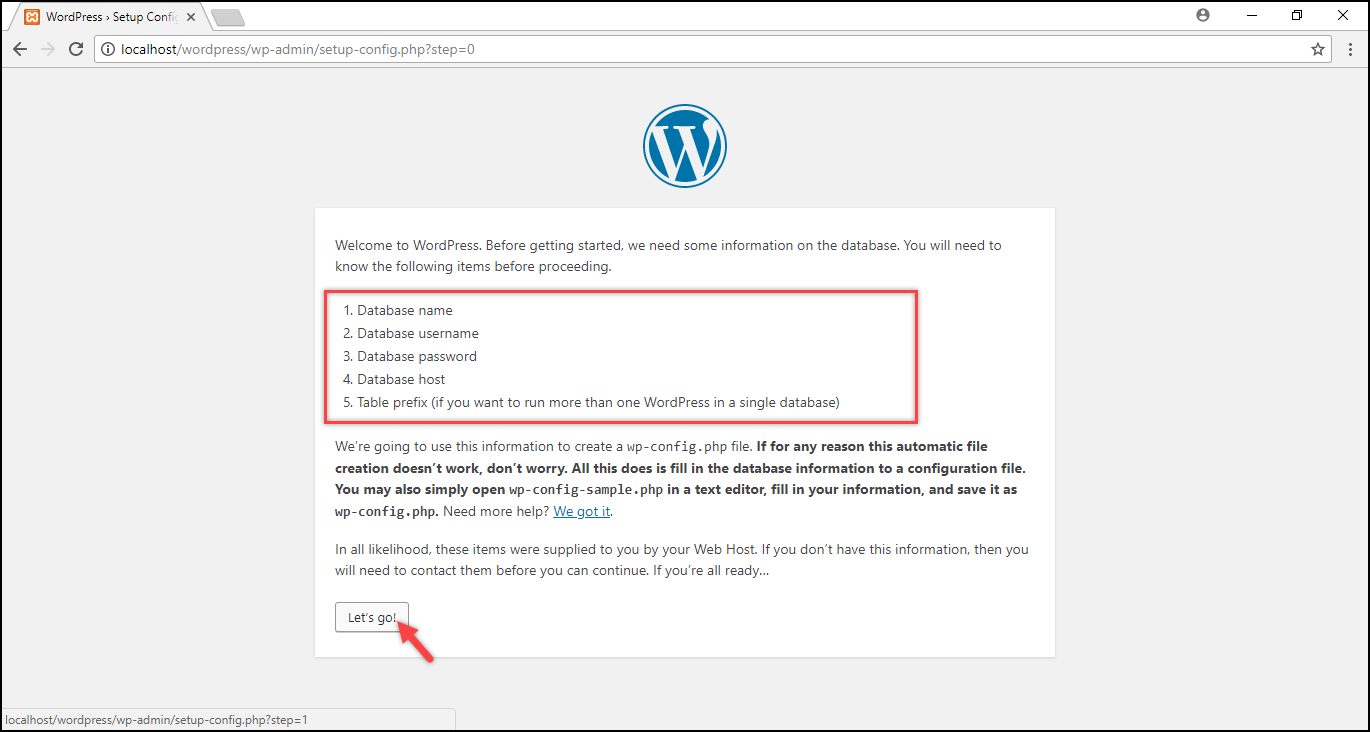

Click Let’s Go to proceed further.
- In the next screen, enter the required information in the given text fields and click Submit.
For demonstration purposes, I have entered database name as db_wordpress(which I created in the database in step 2), username and password as root, and have chosen to keep the hostname and table prefix the same as localhost and wp_ respectively.
Tip: Since we’ll be working only on our computer, it is not necessary for a strong authentication process. Hence you can choose a simple username and password(as I did above).
But when using a web host, I suggest you choose a proper username and a strong password.
The below screenshot shows the sample settings.
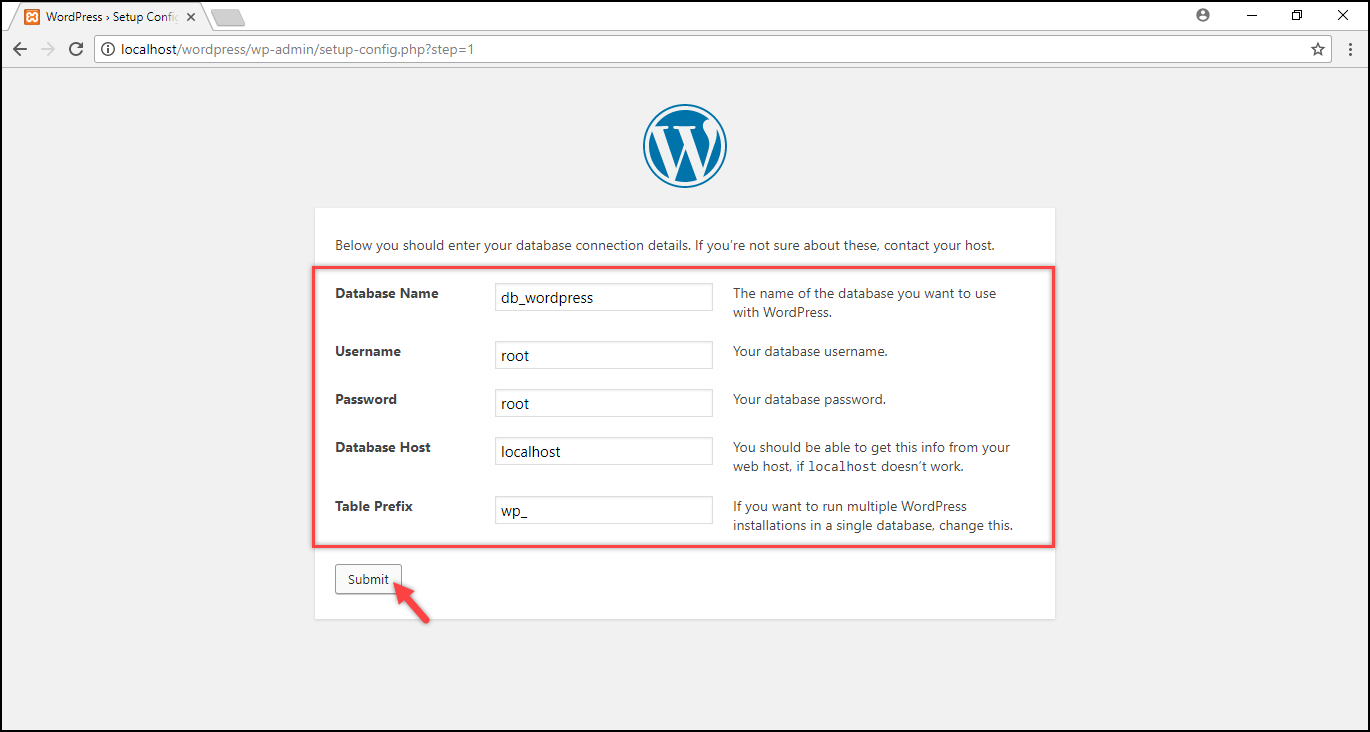

In case you run into an error establishing a database connection, you need to enter this information manually. To do this, open wp-config-sample.php file. This file is located in C:\xampp\htdocs\wordpress\wp-config-sample.php (navigate to your respective WordPress install location).
Enter the database name, database username & password in the section of the code as shown in the screenshot.
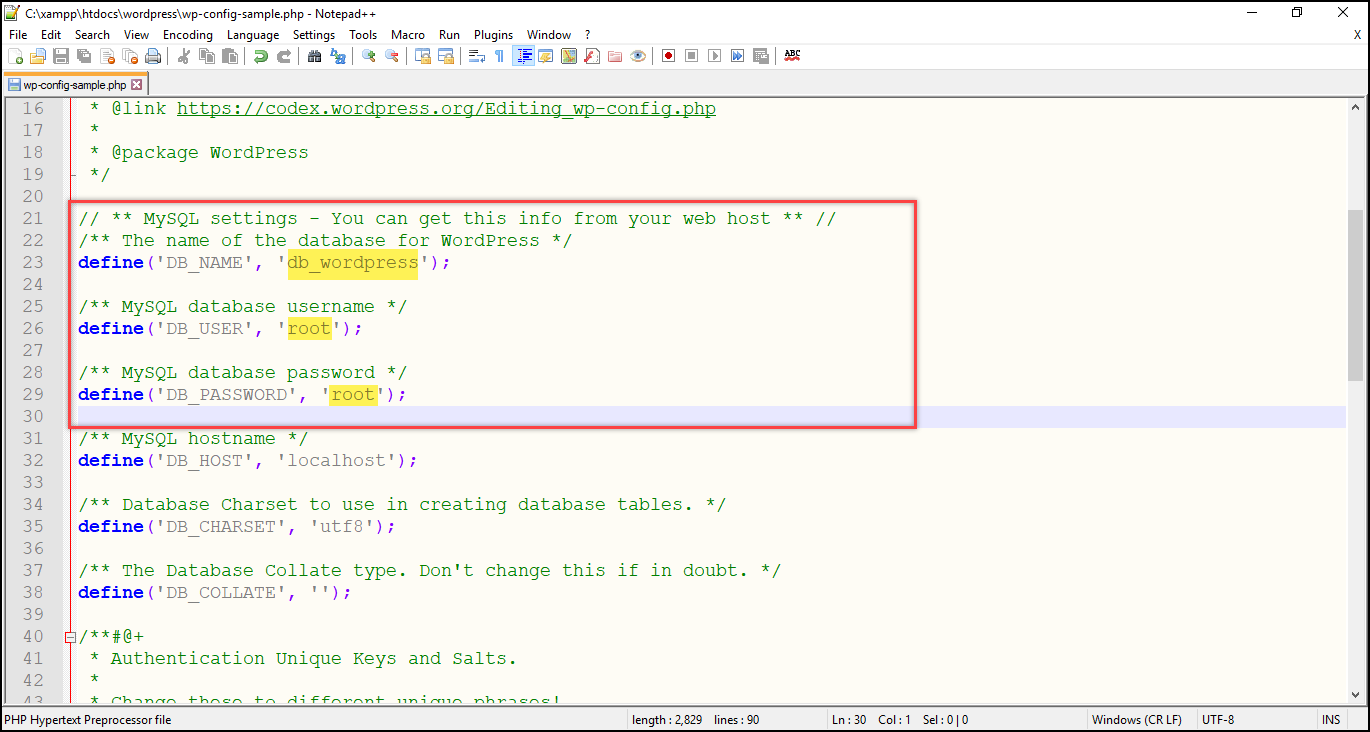

Save the file as wp-config.php instead of wp-config-sample.php and come back to the setup in the browser.
- In the following screen, click Run the Install.
5. Installing WordPress
- Finally, you reach the famous WordPress Five Minute Installation process. In this screen, enter your desired site title, wordpress username & password, email address and click Install WordPress.
A screenshot with sample settings is shown below.


Tip: The user credentials that you enter here will be used for logging into your WordPress website every time. Hence choose proper credentials for local as well as for web host.
- Once WordPress is installed, you’ll end up on the login page. Enter your WordPress username and password to log in, as shown in the below screenshot.
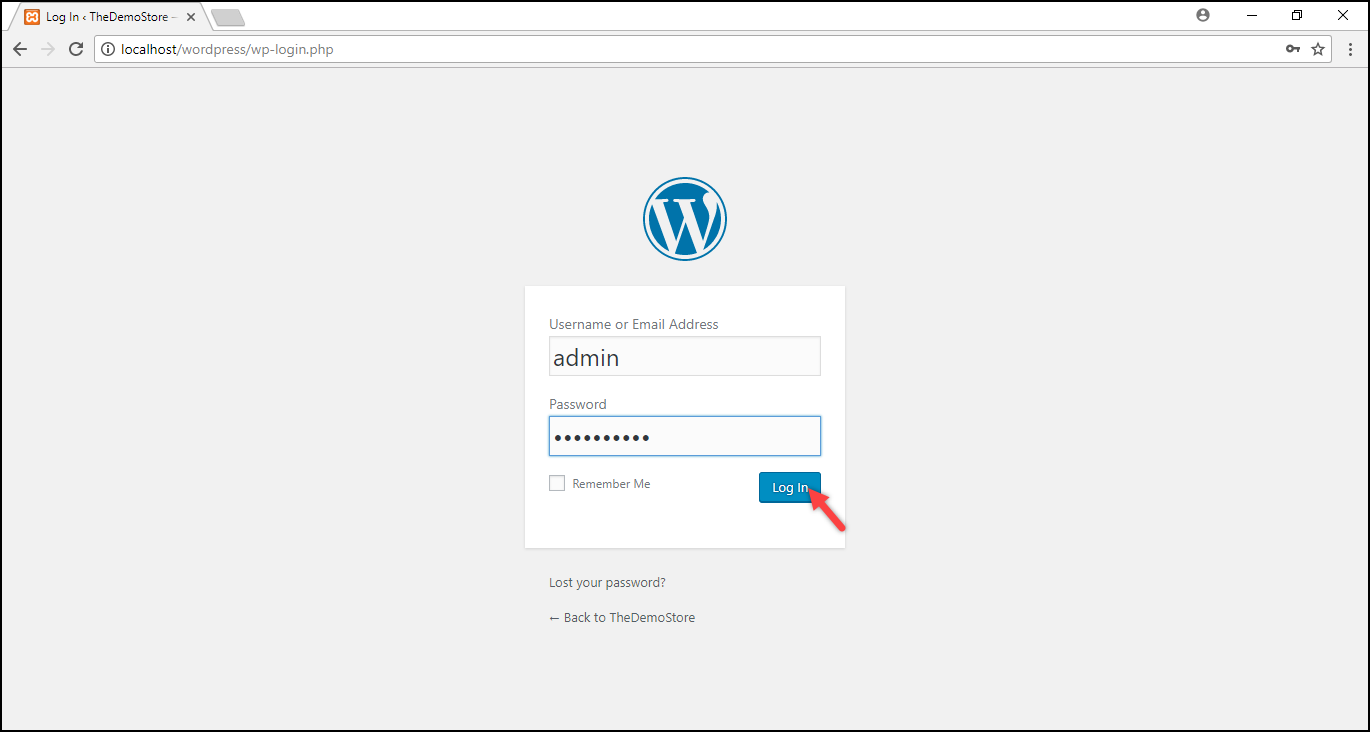

- Once the login is successful, you’ll reach the WordPress dashboard. This indicates you have successfully installed and configured WordPress.
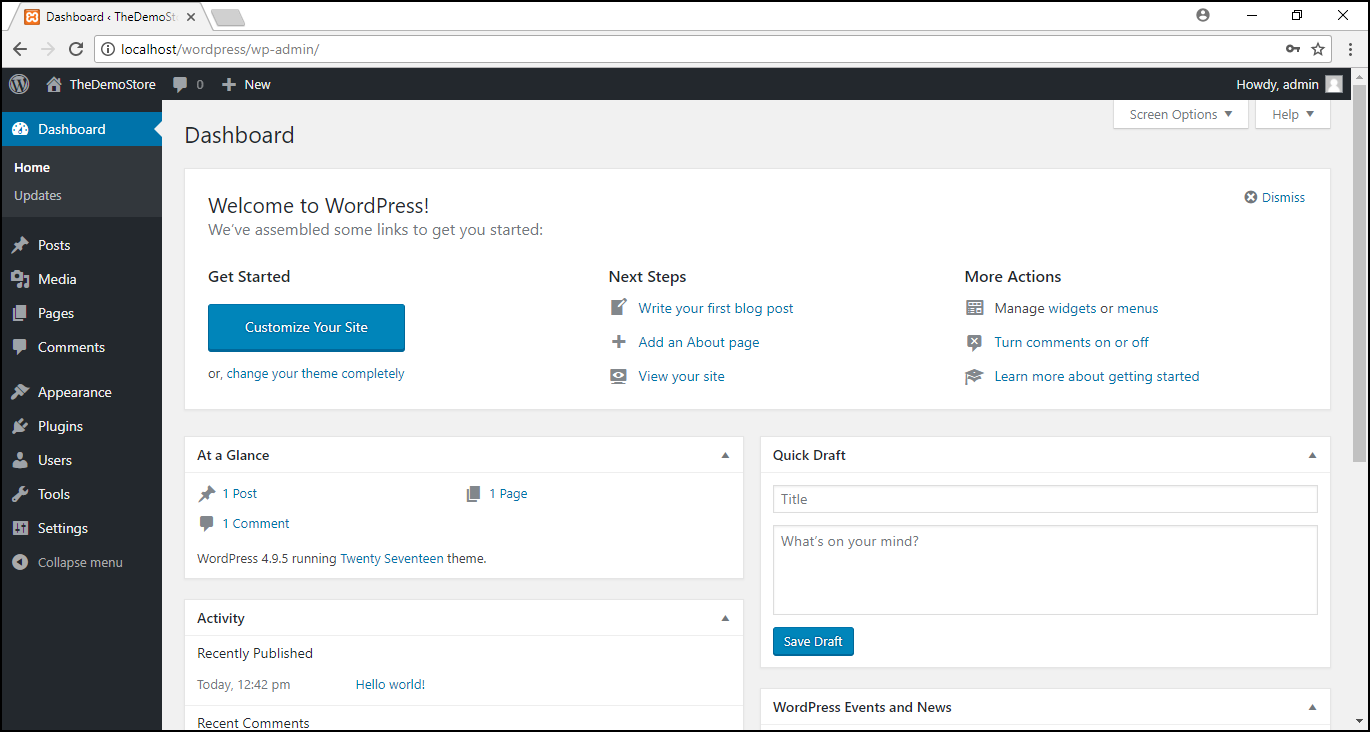

That’s it! You are now ready to get started on your WordPress website.
You can also watch a quick video tutorial for this process.
How to install WordPress on MAMP for Mac?
Following are the steps to install MAMP and WordPress on Mac:
1. Downloading and installing MAMP
- Go to the MAMP official site. Click on the Download button of the free version, as shown in the screenshot below.
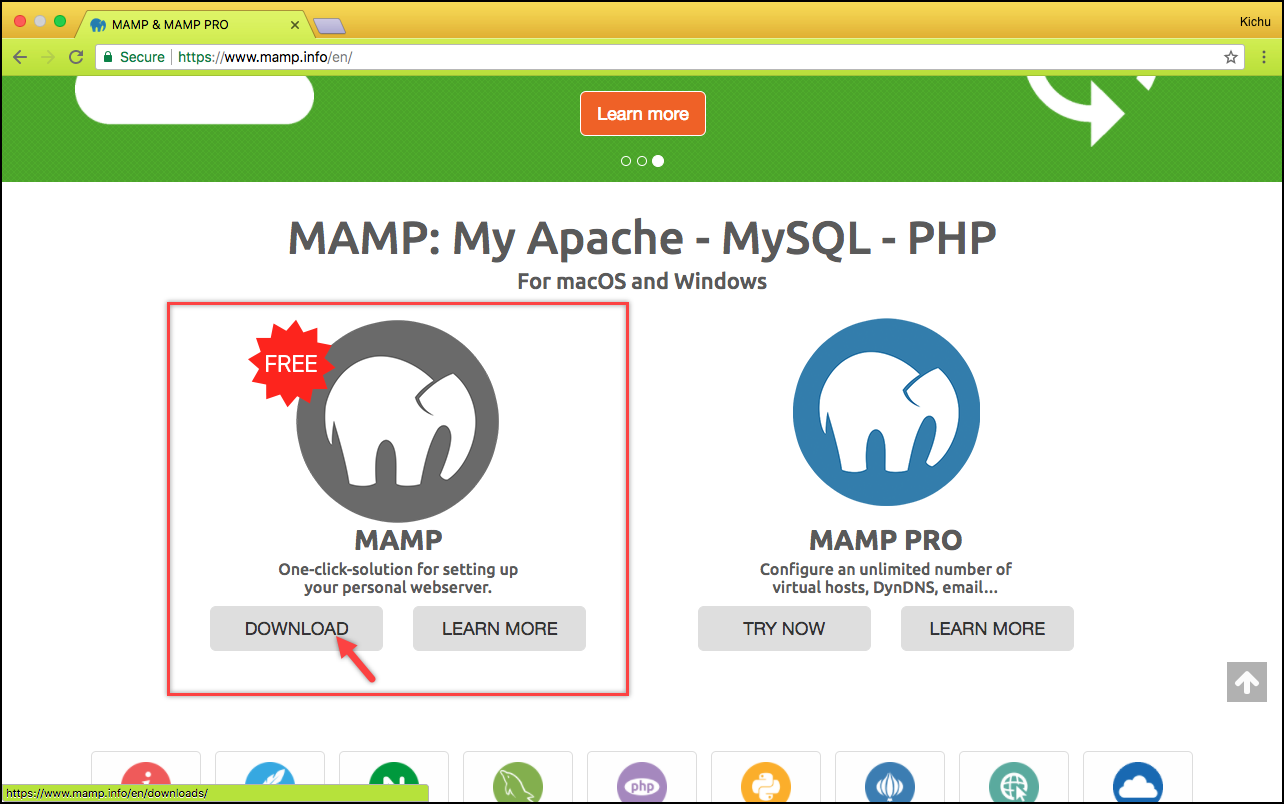

- Next, choose macOS version and click Download, as shown in the below screenshot.
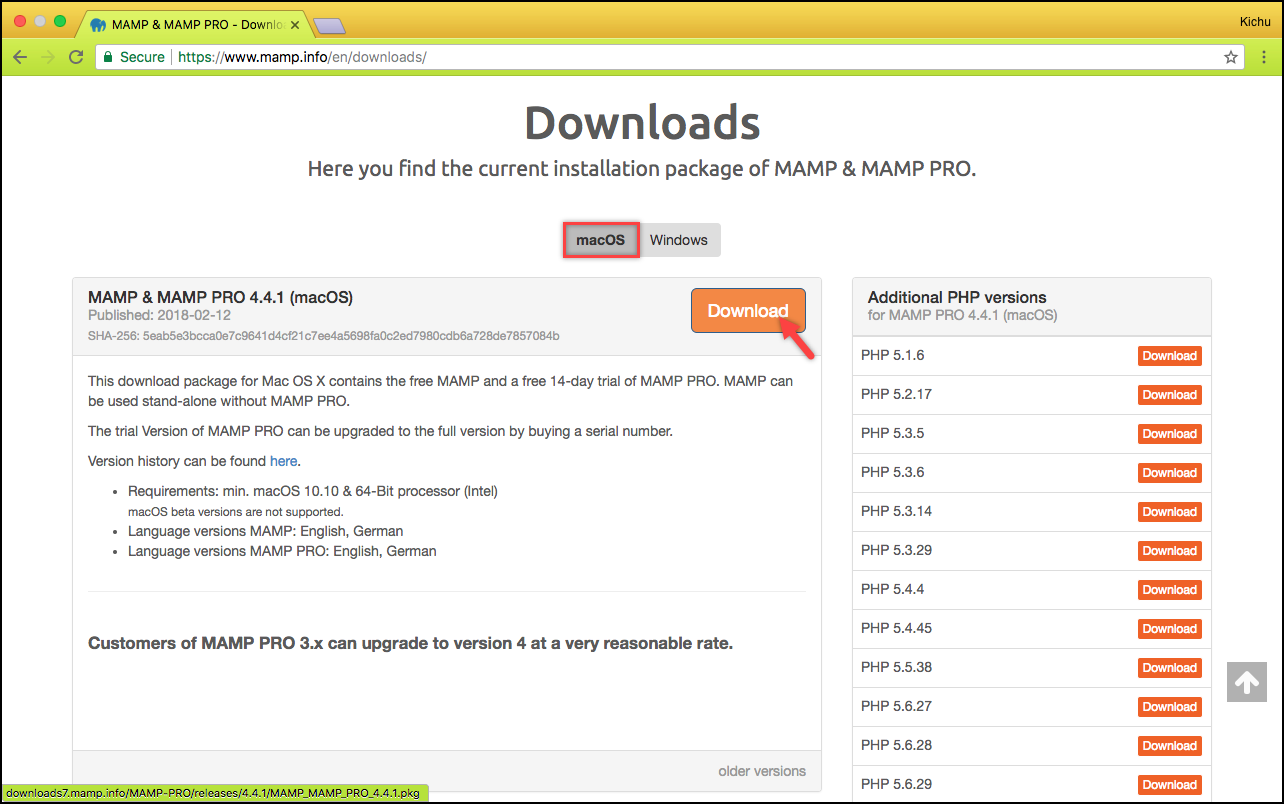

- Once the download is complete, click on the downloaded file to run the installation.
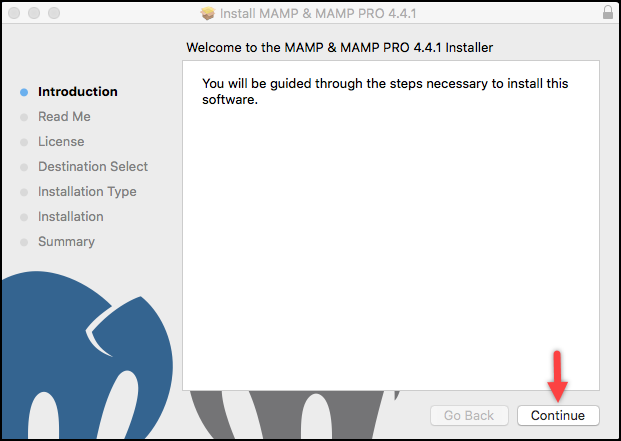

Click Continue to proceed.
- You may be prompted to enter your user credentials for installing the software. Enter your user credential and click on Install Software button as shown in the screenshot below.
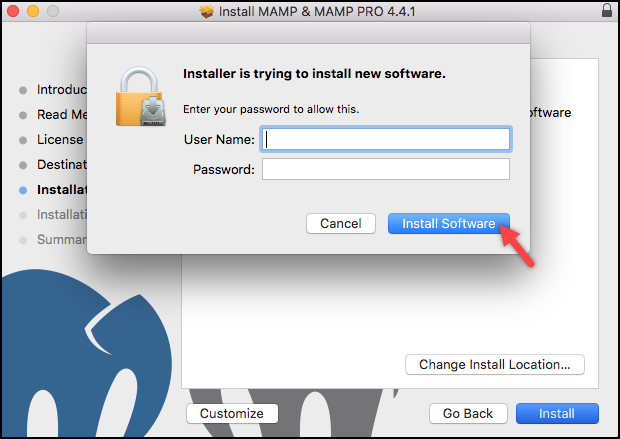

- Walk-through the setup for completing the installation.
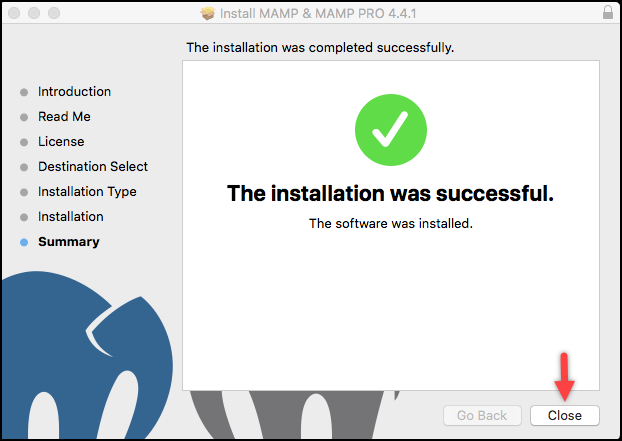

Starting Apache and MySQL services: You can find the MAMP folder in the Applications folder, as shown in the screenshot below.
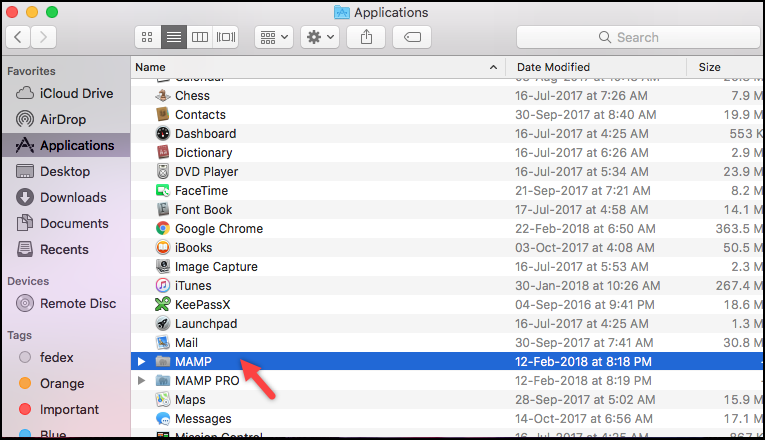

Open the MAMP file and click on Start Servers icon. This will start Apache and MySQL server, which will be indicated with the green color signal on the Start Servers icon and for each service on the top right corner.
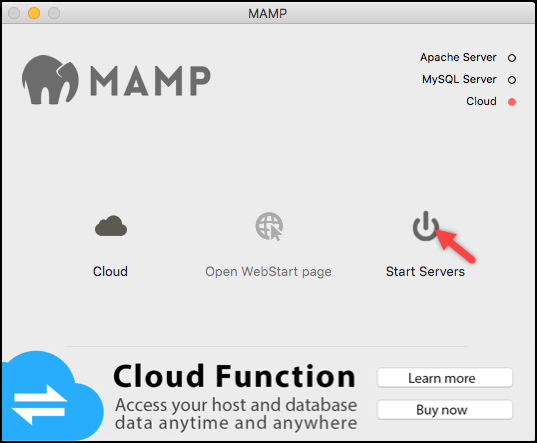

2. Creating a database
- On the same screen, click on Open WebStart page to open MAMP as a localhost page.
- Next, click on phpMyAdmin option in the MySQL section, as shown in the below screenshot.
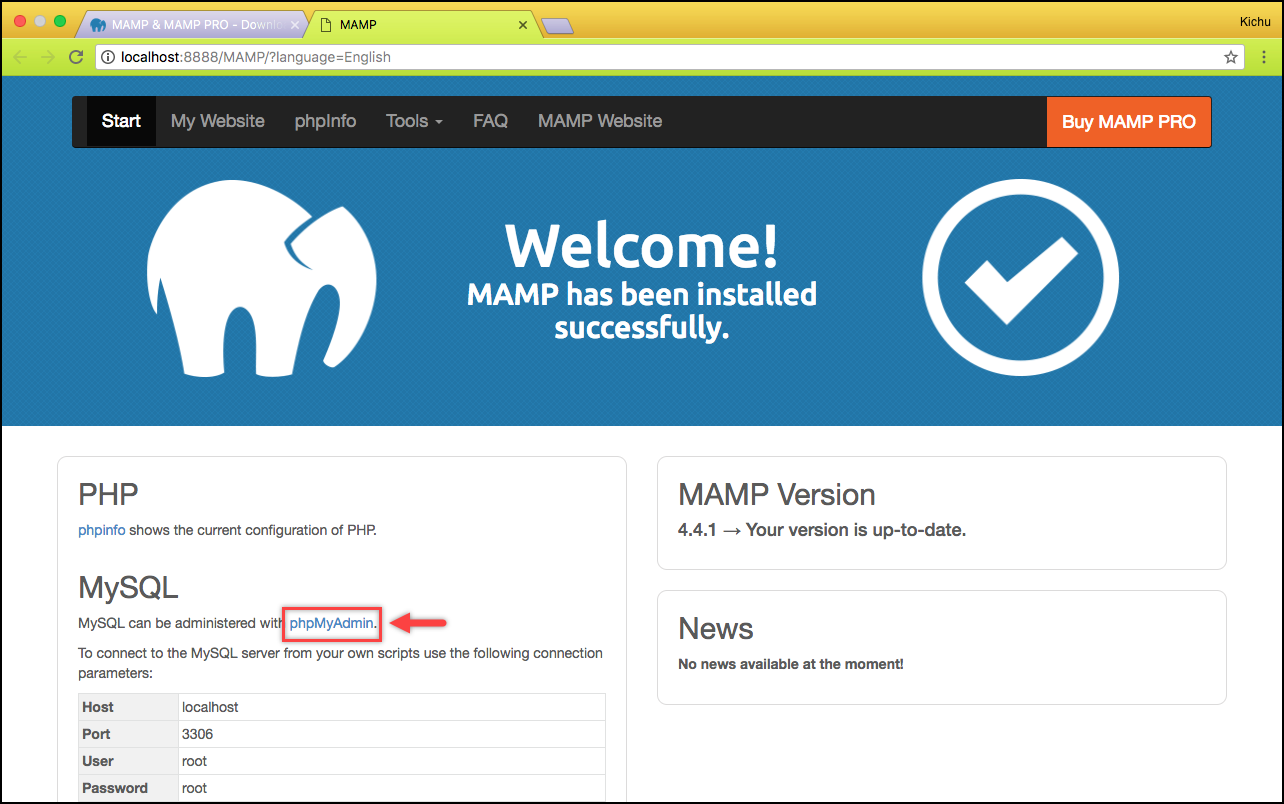

- The phpMyAdmin page is where you can create a database for your website. Similar to the steps I explained for XAMPP in the earlier section of this article, enter a database name and click on Create button.
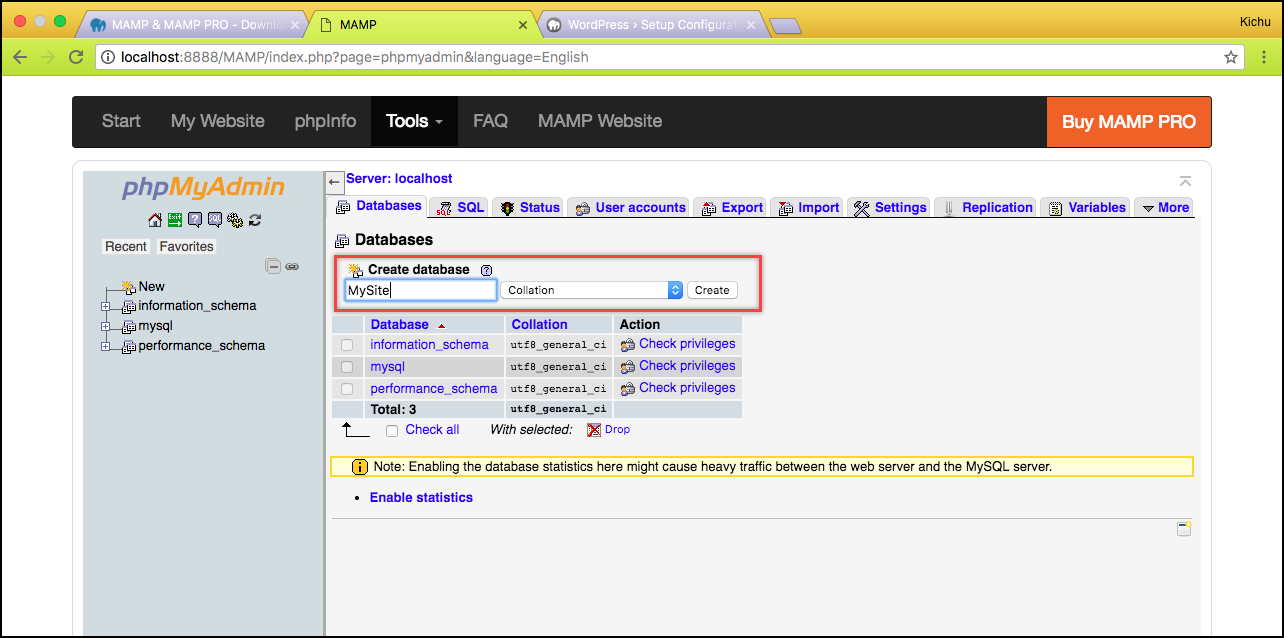

- In addition to this, you can choose to enter your desired username and password for the database or skip this step to enter the credentials later while setting up WordPress.
Following screenshot shows a sample screen to enter user credentials for the database.
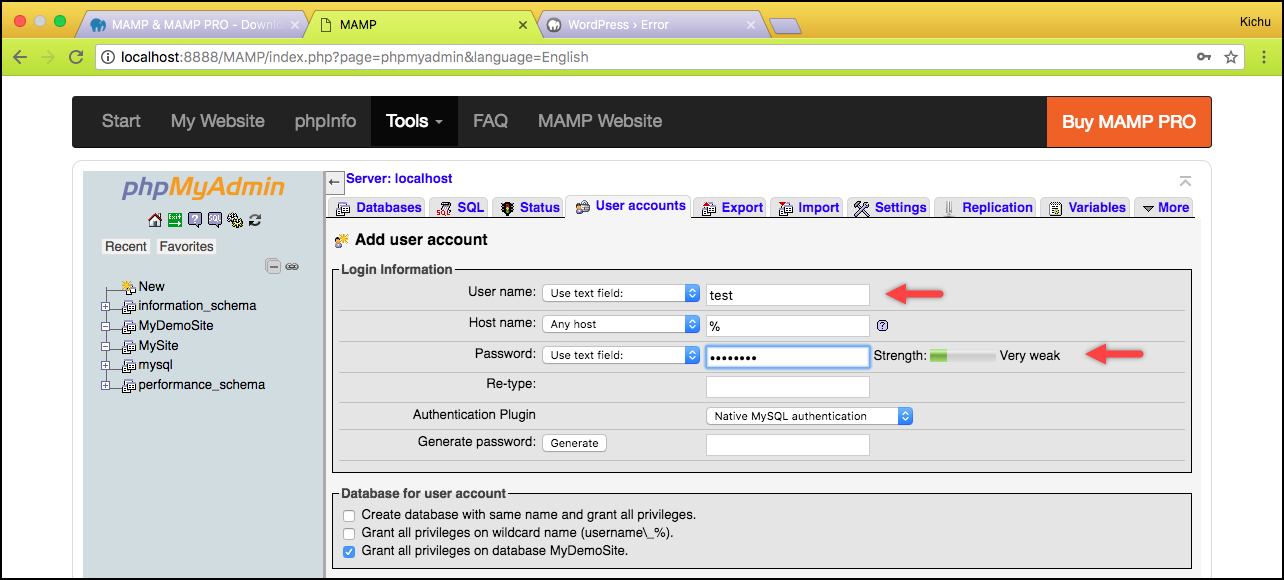

3. Downloading WordPress
Download WordPress from its official website. Once the file is downloaded, unzip it. You can rename the unzipped folder to your desired website name(say MyDemoSite). Copy the renamed website folder and paste it into the htdocs folder, by navigating to Macintosh HD > Applications > MAMP > htdocs.
4. Connecting WordPress and MAMP
- Open your web browser and enter the address localhost:8888/MyDemoSite. Replace MyDemoSite with your website name.
- The first screen shows the language settings. Select your desired language and click Continue.
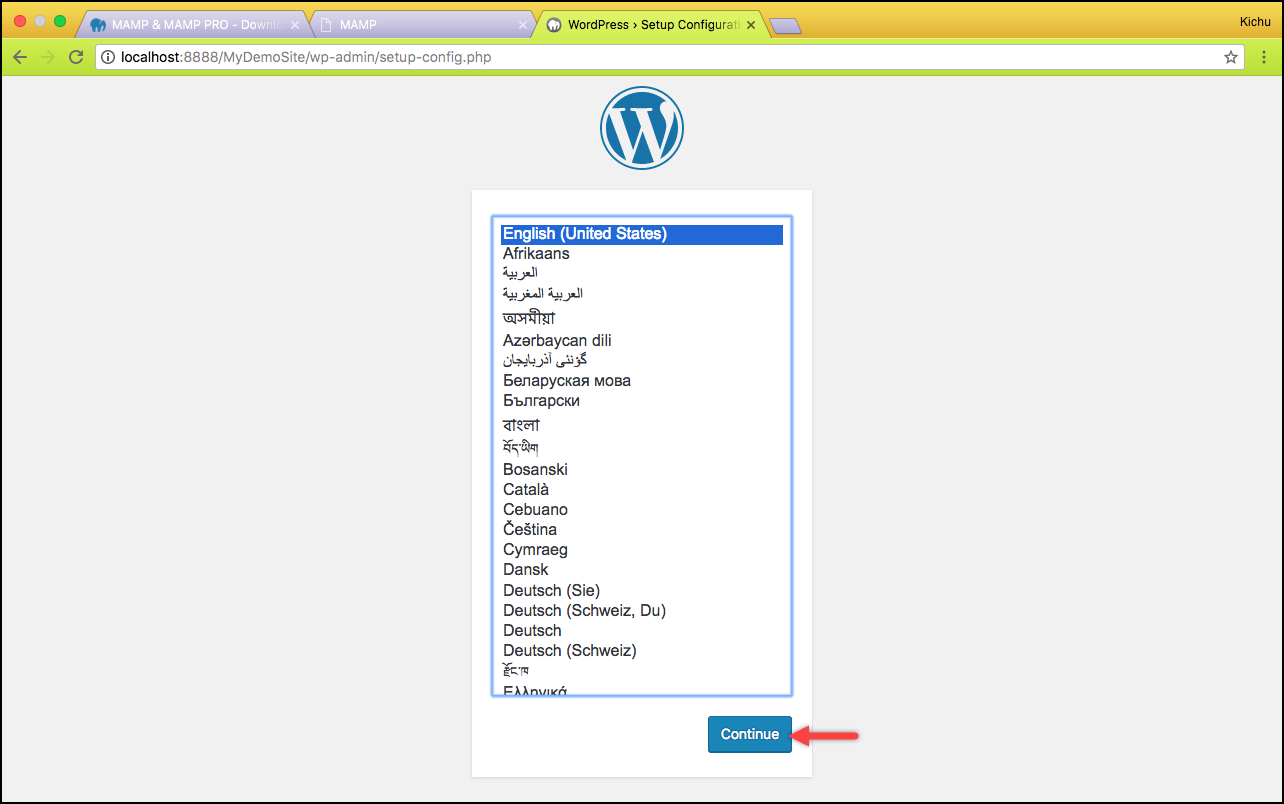

- If you have not entered user credentials in the database in step 2, you can enter database information like database name(say MySite) and database username & password(say root). You can keep the default values for database host and table prefix as localhost and wp_.
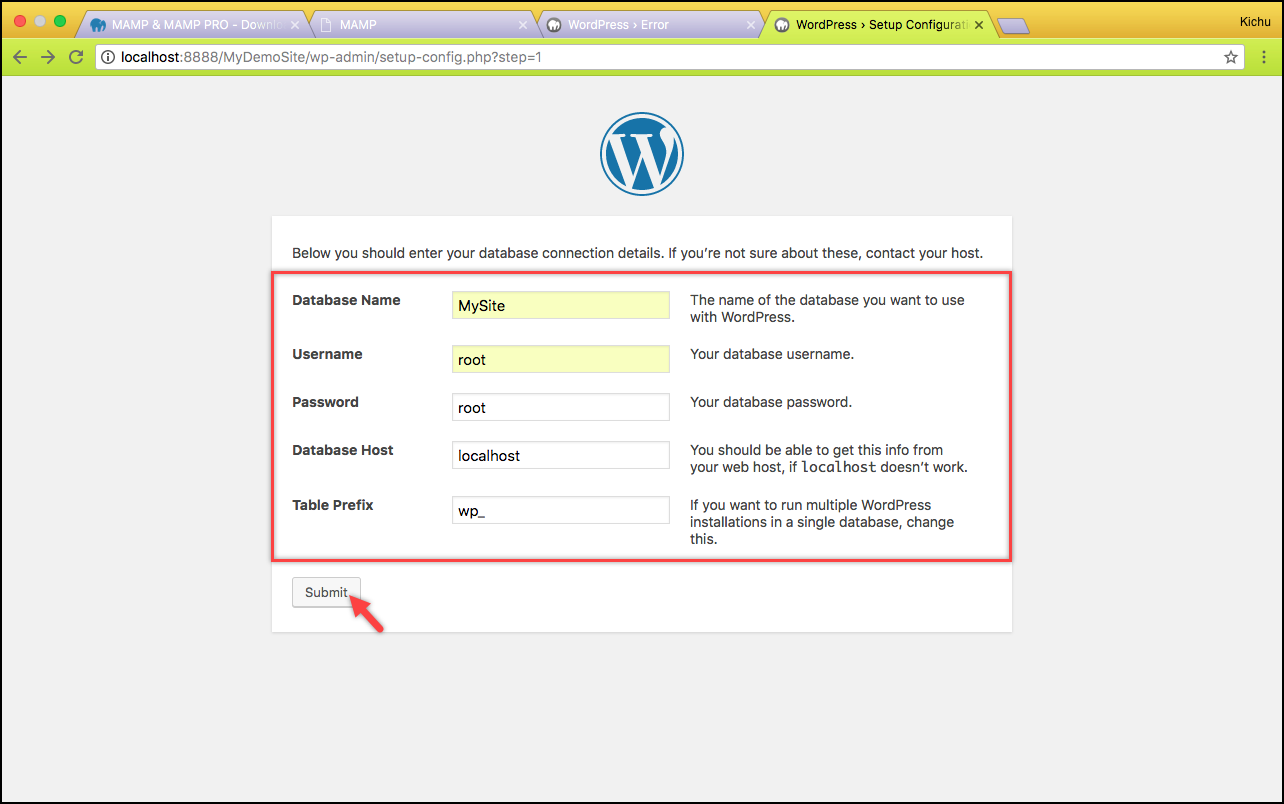

Click Submit to proceed further.
- Click on Run the Installation button to start the installation process.
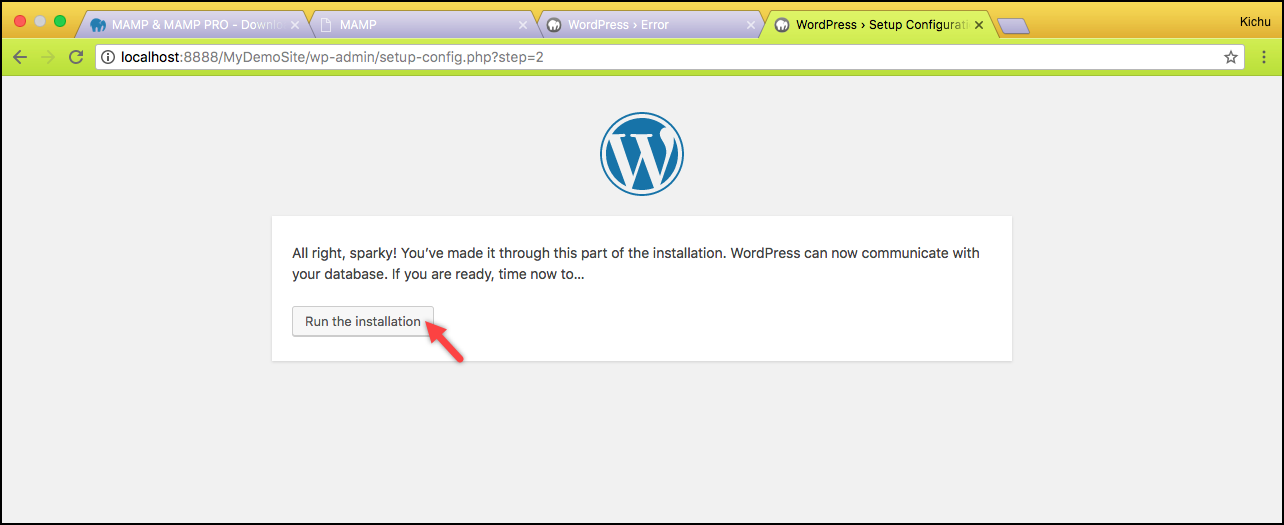

5. Installing WordPress
- At last, you are taken to the WordPress installation page. In this page, you are required to enter the suitable site title, WordPress username & password(this credentials will be used to login to your site every time), email address and click Install WordPress.
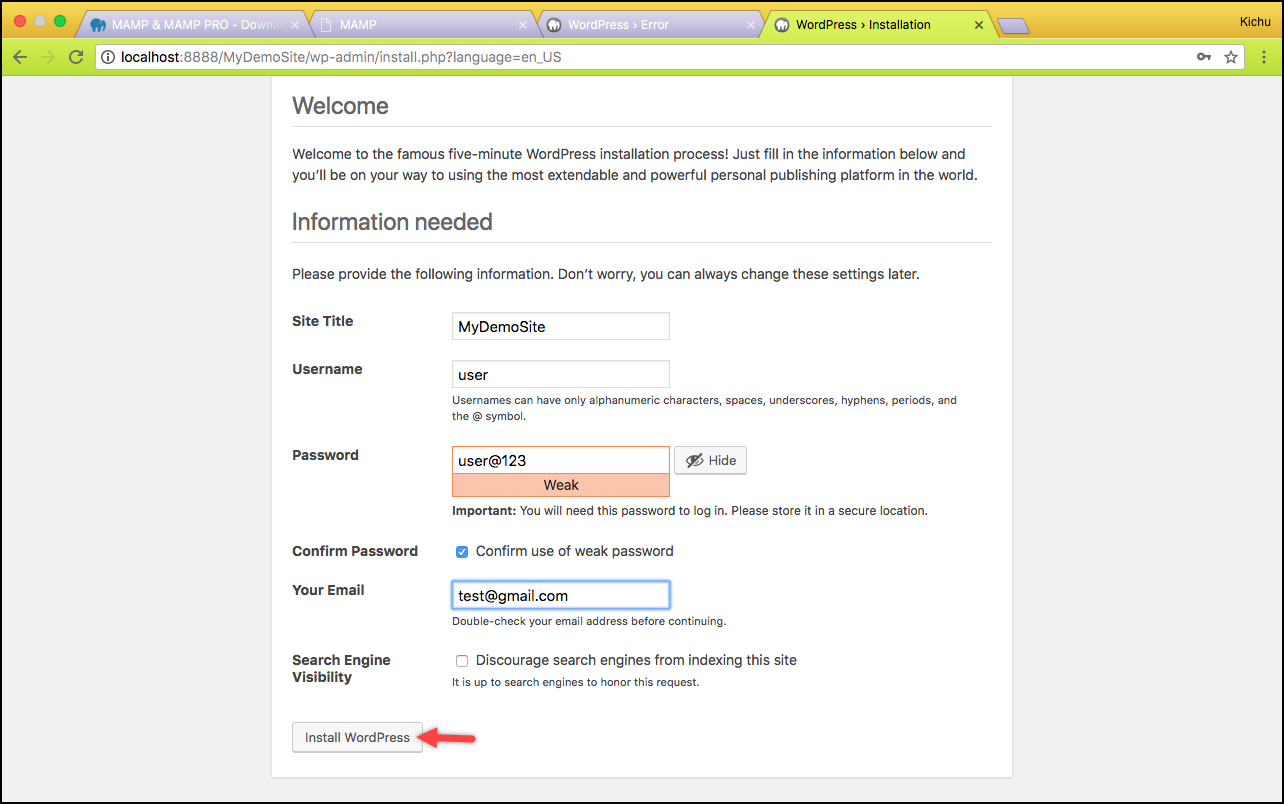

- Next, follow through to the WordPress login page, where you need to enter your WordPress username and password(entered in the previous point) to login to your WordPress dashboard.
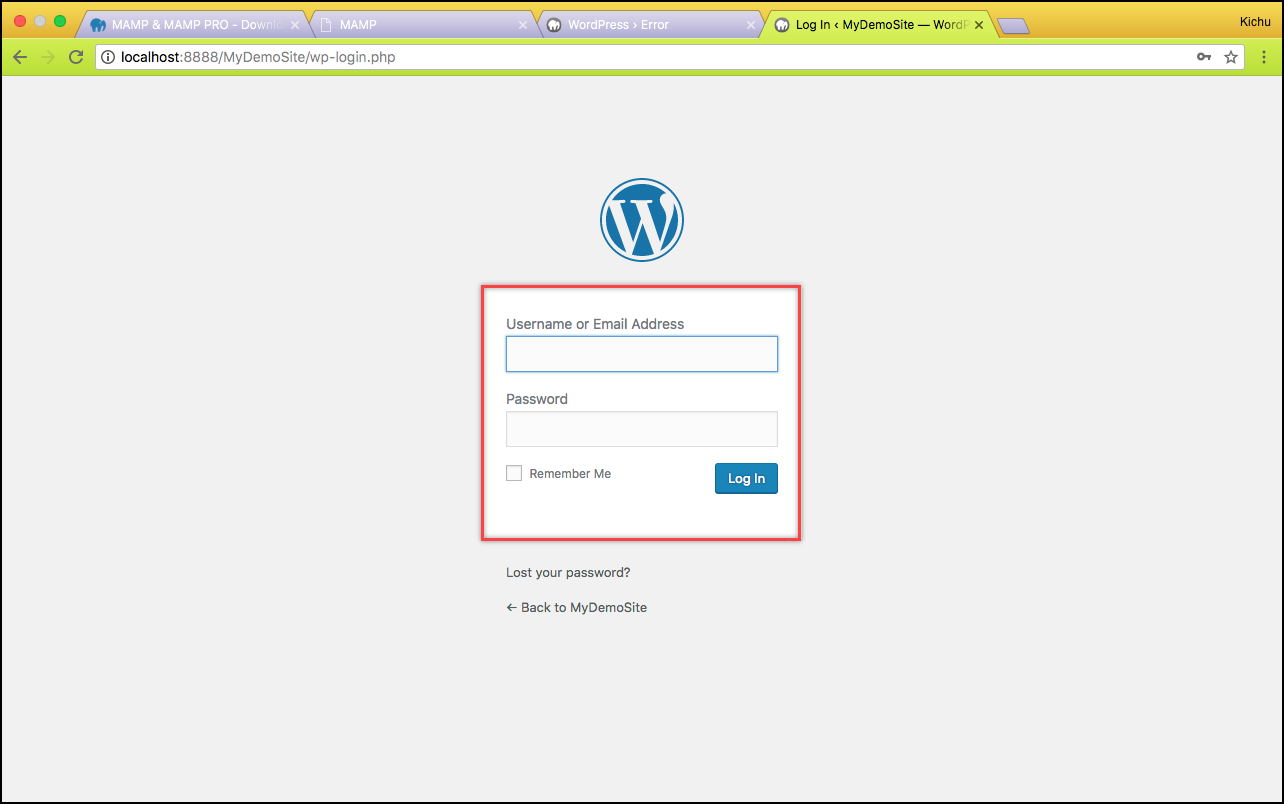

It’s time to roll!
In this way, you can install WordPress on your computer.
Now that you have your WordPress site ready, get started with installing WooCommerce.












I am searching on google how to install WordPress in cpanel and I find your post. And after reading your content, hopefully, now we can install WordPress easily. Thank you!
Thank you! Thanks to you I was able to create my blog 🙂
Regards!
Thanks for your Feedback. We are Glad to help you.
This article of yours is really very informative. Even someone with just a little to basic programming knowledge can understand and follow it. Thanks for sharing useful information!! I am really impressed to see that you have provided such an interesting information about WordPress.
I was struggling to find such article. Anyways can you suggest me some better option to get Cheap Linux hosting other than redserverhost.com?
Thank you once again!!
Hi there, Thanks for the feedback. Please check our article that mentions a few good hosting solutions as well – https://learnwoo.com/best-woocommerce-hosting-solutions/
Thanks for sharing this awesome guide, I have successfully installed WordPress on XAMPP also for another website I am using Cloudways Managed Hosting (https://www.cloudways.com/en/wordpress-cloud-hosting.php), I installed on the 2nd website using their managed platform.